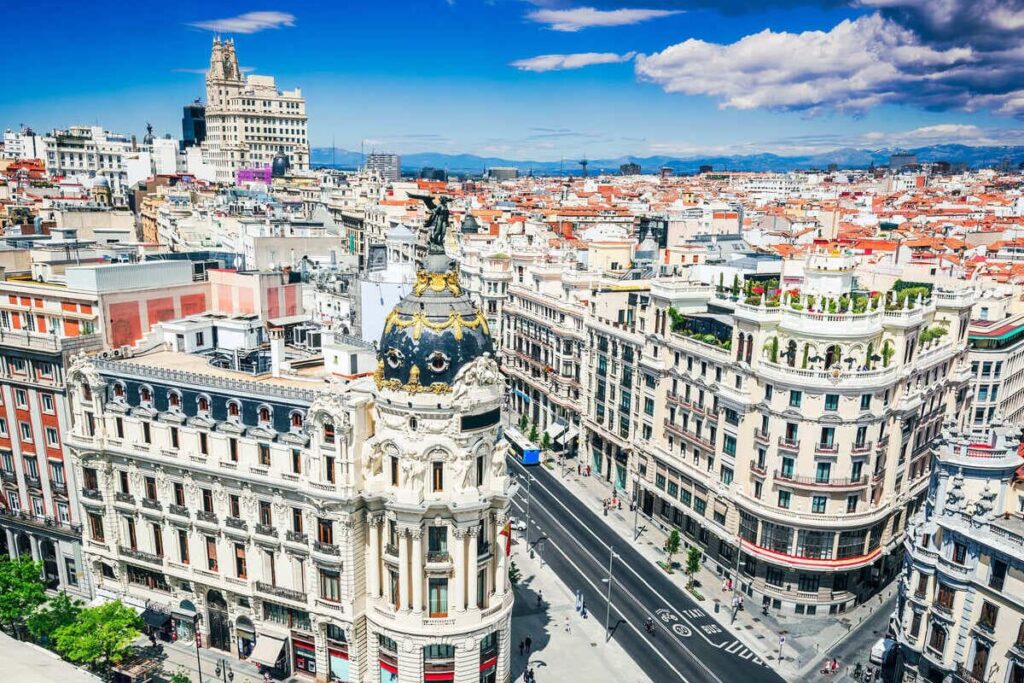Travel Guide
New Direct Train Will Connect These Two European Capitals For The First Time
Spain and Portugal are two of Europe’s sunniest destinations, and considering they border each other and share the same Iberian Peninsula, you’d expect cross-border train journeys, especially between the two capitals, to be smooth.
This couldn’t be farther from the truth: if you’ve ever been tasked with planning an overland trip from Madrid to Lisbon, you will know it can be rather challenging.


Currently, the fastest option involves one train switch, going from Madrid to Badajoz (in Spain) and then transferring to a (painfully slow) Portuguese train, which takes a total of 7 hours—and that’s if any eventual delays are to be excluded.
It’s been a long time, but before this decade is up, a high-speed service between the capitals will launch, cutting travel to only 3 hours:
A New High-Speed Train From Madrid To Lisbon
After signing off on a long-anticipated project to connect the port cities of Bari and Naples, sitting on opposite ends of the Italian boot, the European Commission will greenlight the construction of a high-speed train linking Madrid, in Spain, to Lisbon, in Portugal.


For whatever reason, railway links between the brotherly nations are suboptimal, at best, largely due to their delayed development compared to other European states.
For instance, for much of the 20th century, they were under strict dictatorships that didn’t prioritize cross-border connectivity.
As a result, traveling from Madrid to Lisbon, or vice versa, can be quite the adventure: you’re either looking at a 7 to 9-hour bus ride or, as described before, an equally long train journey with at least one change, though sometimes it can be up to 4.


A direct, overnight train does exist, or it used to prior to the pandemic, though it serves more as a tourist attraction in itself than purely as a transportation mode, operating on a hotel-on-wheels model, and at elevated fares due to the low demand.
It’s not like Madrid and Lisbon are sitting thousands of miles apart from each other, either: it’s a mere 388 miles, and to think you can already board an overnight train from Paris to Berlin, covering a distance of 654 miles in roughly 11 hours.
When Will The Train Launch?


A direct, high-speed train from Madrid to Lisbon is long overdue, but you can thank FIFA for giving it a little extra push.
If you’re wondering why that is, in 2030, Spain and Portugal will co-host the 2030 World Cup, and as we have seen with previous World Cups in South Africa, Brazil, and most recently France, major infrastructure projects are in order.
The goal is to deliver the high-speed train before the games start, and as ambitious as that plan might be, many also raised suspicions the French would be able to transfer their grand opening from a stadium to the heart of the city of Paris, let alone right on the Seine.


Plus, this is no Maya Train we’re talking about.
Some of these tracks have already been laid, and as inefficient as it may be, there is already railway infrastructure spanning the Iberian Peninsula: in other words, all that is needed is will to effect changes, and a generous EU budget.
As far as the latter goes, that’s already secured, and it’s not like Spanish and Portuguese officials are too busy having a siesta in the meantime, either:
Fewer Flights, More Train Connections


A second rail bridge over the Tagus River, which Lisbon straddles, is confirmed to be in the early stages of construction. It is expected to open the way for a high-speed train in the future, while the already iconic 25th of April Bridge will continue to handle traffic and slower regional trains.
On top of that, the respective governments are working to build their sections of the line, and much like the rest of the EU, they’re under pressure from Brussels to drastically cut emissions and help the bloc reach its climate target.
Currently, there are over 40 daily flights between the capitals, with a duration of 1h15—1h35.
Once the train launches, that’s predicted to be reduced, especially given the planned journey length of only 3 hours, down from the current 7-9 hours.
Ready For Your Trip? Check The Latest Entry Requirements For Your Destination Here
↓ Elevate Your Travel↓
Sign Up Now For Travel Off Path Premium! No ads, VIP Content, Personal Travel Concierge, Huge Savings, Daily Deals, Members Forum & More!


✈️Join Our Travel Off Path Community Forum: Where travelers unite, ask questions, share experiences and even find like-minded travel buddies!
SUBSCRIBE TO OUR LATEST POSTS
Enter your email address to subscribe to Travel Off Path’s latest breaking travel news, straight to your inbox.
This article originally appeared on TravelOffPath.com
Opinions expressed here are the author’s alone, not those of any bank, credit card issuer, hotel, airline, or other entity. This content has not been reviewed, approved or otherwise endorsed by any of the entities included within the post.

